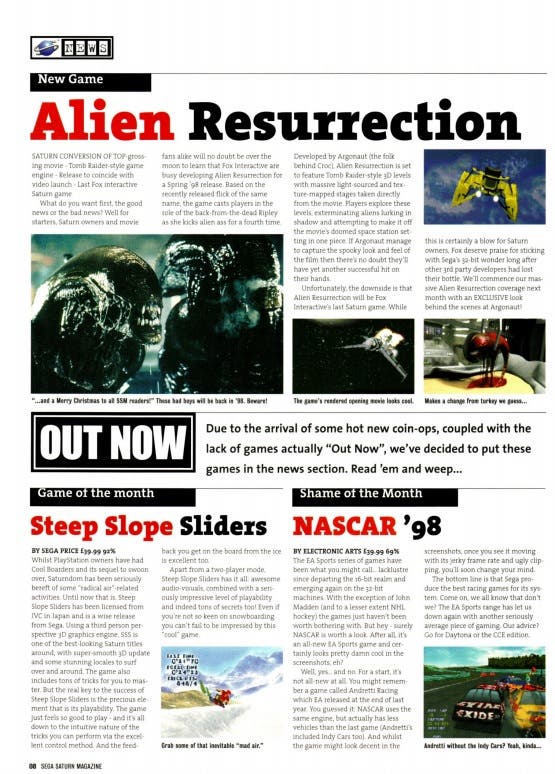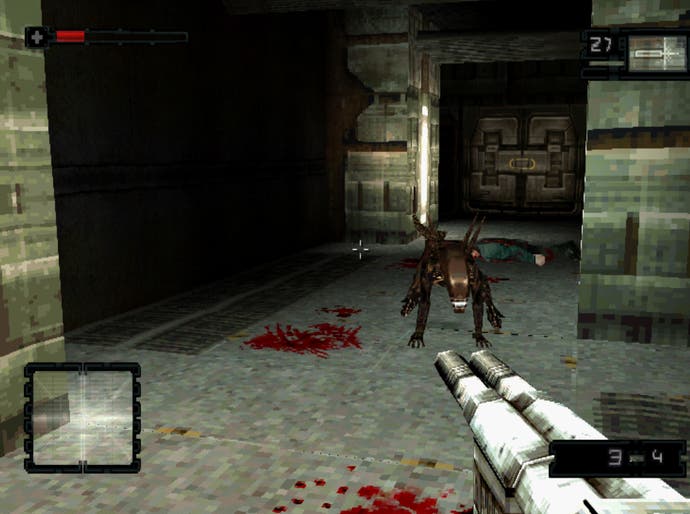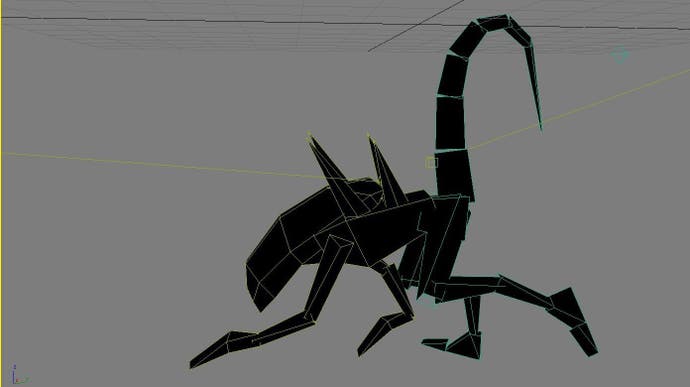The making of Alien Resurrection PSOne
In development hell no one can hear you scream.
Regardless of your age, you probably know Alien. In the 39 years since Ridley Scott's timeless sci-fi horror chest-bursted onto cinema screens, a steady stream of Alien-related content has emerged in nearly every form of media. Film, books, comics, video games, a board game and even children's action figures - the Alien franchise is infestatious.
But the Alien franchise is a rollercoaster ride of quality. In film, we have the colossal heights of the 1979 original and the shockingly mundane Alien vs Predator 2: Requiem. In video games, titles based on Alien and its sequels follow this see-saw quality bar. For every Alien Isolation there is an AVP: Extinction, for every Aliens arcade game an Aliens: Colonial Marines.
November 1997 brought with it one of the most reviled films in the Alien franchise: Alien Resurrection. From both consumer and fan standpoint it felt like nothing more than corporate money-grubbing, dragging one of film's only (and greatest) female protagonists back from the dead for a quick buck. Jean-Pierre Jeunet's take on the franchise is an undoubtedly messy and ultimately weird piece of filmmaking - albeit one that has its fair amount of enjoyably schlocky moments - but the most interesting stories around it lay not with the film, but in British developer Argonaut's video game tie-in of the same name.
Pre-production on Alien Resurrection would begin at the start of 1996, directly after the release of Alien Odyssey and the cancellation of the now-released Star Fox 2. Development started at an appropriate time in the film's development pipeline, but the game wouldn't see commercial release until October 2000 - three years after the film's release and two platforms short of its target. Argonaut was a disorganised company, a statement that has been uttered by many members of the Resurrection staff, and no game would prove that more than this.
When pre-production of Resurrection started, a handful of the Alien Odyssey team were ushered onto the new game without any idea as to what it would be about. Brothers Tim and Dave Moss, programmer and artist respectively, knew two things, though: it was based on Aliens and it was being made for Fox.
"At the end of Alien Odyssey, I'd already started working on Alien graphics - at that point we were calling it AVP because that's what we thought it would be," Dave Moss tells Eurogamer.
The Moss brothers worked together with a handful of others to develop a prototype around this idea. With no clear direction on what genre of game to make from the higher-ups at both Fox and Argonaut, Tim Moss designed an engine around a game that had only just released but he was utterly obsessed with: Loaded.
"I had made a game engine and an editor that allowed you to rapidly prototype top down, level block constrained games," Tim Moss says.
The prototype was basic: textures were hand drawn and sprites were crudely made, but this build wasn't made to show off the game's artistry. It was meant to show off the engine's accessibility.
"You could edit levels and then immediately play them. That's the kind of thing that gets publishers very excited," Tim Moss continues.
After seeing this, Argonaut got the go-ahead and were tasked with two development objectives: to create the tie-in game and release it on three major platforms (PSOne, PC and Saturn, with the former being the primary development platform), and a short game to be played in the film as a favour for the company. " 'You've got to get a game done and it will be featured in the movie,' they told us. 'You've got a few days.' "
Working alongside Argonaut's technology-focused ARC group, the team behind the SuperFX chip, a handful of Resurrection's developers would work on the game. Named Atom Zone, it can briefly be seen during the film's introduction of The Betty's crew.
Work on Atom Zone was quick and efficient. The artists pumped out high quality 3D models of various ships from the Alien franchise, each consisting of around 1300 polygons each, while ARC's Nick Hemmings created a custom twin-GPU rig capable of running everything at a native 1024p resolution - 17 times the resolution of their last commercial product.

Atom Zone was completed, and full production began on Resurrection. For a developer making a product based on a movie, the amount of support given to the team was admirable. A small group was sent down to the set of the film in October 1996 to take reference images of everything they could get their hands on: weapon props, ship models, full sets, costumes and more. Once a week, Fox would send down boxes full of confidential materials relating to the film. One day they might get a box full of scripts and storyboards, another would see multiple boxes chock-full of unedited dailies - raw film footage.
The consensus formed by team members from the early stages of Resurrection's development is that Fox may have helped a little too much. Scripts and storyboards would see drastic changes from month-to-month with entirely new openings and endings being drafted almost constantly. One member of the team recalls a time when the original opening of the film began with a Xenomorph moving around followed by the camera pulling back and revealing a large thumb. The Alien would be squished, and the camera would zoom out further, revealing the Xenomorph was nothing other than an insect on the captain's joystick.
The team wanted to create a product that was faithful to the source material while also being fun, but this would result in the developers themselves having barely any fun at all. Most days would consist of sifting through the seemingly endless stream of dailies with team members - mostly the artists - taking turns to sit down and watch 10 or so hours of different takes, repeatedly. Anything deemed important was timestamped.
"There was a cabinet full of VHS tapes which, to be honest, were too boring to sit through," lead artist Mike Wilson says.
Different team members recall different things; Mike recalls watching guys in Xenomorph suits smoking cigarettes through holes in the necks of their latex costumes; Dave not-so-fondly remembers seeing the cast sitting on a hillside drinking beer as one of the film's canned alternative endings.
After a year of work, Resurrection was facing numerous problems. The team had worked incredibly hard but there was a sense that Tim Moss' original vision for the game wasn't what they wanted to make anymore. A lot of the work was done, about 60 per cent or so, but with the end of 1996 approaching the team saw more impressive and realistic titles hitting store shelves. Amid a generation that focused on pushing the technical and graphical boundaries of what video games could do, Argonaut would drop what they were doing and follow suit.
"I can't remember when it was, but development was very slow, so we had certainly missed the boat on the Loaded-style," Dave Moss recalls.
Seeing the release of boundary-pushing games such as Eidos' Tomb Raider, Argonaut realised the potential the generation had brought. As fans of the franchise, the developers realised they could make a true Alien game, one that realistically recreated the look and feel of a sci-fi horror instead of the shooter-in-Alien's-clothing they'd previously been making.

With Resurrection's new switch to a focus on realism, however, everything they'd made before would have to be scrapped. The old game's level design was far from suited to the wealth of new movement and camera options available to the player in third-person, and the shift in graphical style would result in the removal of all the pre-rendered sprites and animations already created. Instead, everything would be remade into skinned 3D models, a rendering technique that was so expensive it dropped the game's simultaneous enemy count from 100 to around three. The only aspect that would stay was audio, including voice acting from the movie's cast. With so many developers seeing their work essentially thrown in the bin, around 30 per cent would leave and move to other projects.
"We were hopeful we could reuse a lot of the work we did, but that just wasn't possible," Moss says.
"That's why so many people started to get cheesed off with it and went to do something else. It was just redoing stuff. Once you've already done something you don't want to do it again."
Nevertheless, work continued with the new team and Alien's transition to third-person was their new focus for the time being. But the release of the film was rapidly approaching. Argonaut knew there was no way it would make the tie-in deadline.
In November 1997, Argonaut's Alien team was privately bussed out to the Saville Theatre in London for a private screening of the film. The developers loved the franchise, but the few who had pored over the scripts, storyboards and dailies since before principal photography began were wary. After 109 minutes of staring at the cinema's huge screen, everyone came away feeling something different. "Underwhelmed." "I didn't hate it... at first." "As soon as the captain died, it all went to shit." "It was just boring." The few behind Atom Zone felt even worse - after three days of work they only had a second of screen time to show for it.

Upon returning to the studio, morale took a hit. The team continued to work on the game, but its movie tie-in nature diminished as the developers distanced themselves from the faults of the film. It was at this point Fox's marketing pushed the game into public view, with trailers and advertisements consisting only of FMVs from the original version of the game. In February 1998, Sega Saturn Magazine announced Alien Resurrection would launch on Sega Saturn in spring of that year and was to be Fox's last game for Sega's unlucky system. The reality was, the game wouldn't release for the Saturn, and it was still two years off.
Work on this version continued until late 1998 but with little love for the project from the developers, problems became annoyances. Designers were frustrated with the low enemy count and the limitations of the AI movements. Essentially, they'd simply walk in from off-screen and just swipe at the player. This combined with an unruly camera system, which made it near-impossible to call in new foes without the player seeing them pop in, and a dreadfully low draw distance to keep the game running at a playable framerate, meant Alien Resurrection just wasn't fun, and it definitely wasn't scary. There was only one fix the team could think of: a second change of perspective.
"I don't think anyone is ever going to say who said, 'Let's try first-person,' but I do remember being pulled over the desk and it was the first time the whole team gathered around a monitor and started getting excited," recalls senior designer Christopher Smith. "[Before] it was very much just a shooter game without any soul."

Making Alien Resurrection a first-person shooter felt like it cured the game's fundamental problems. This new game would sadly lose the voice talent from the film's actors, but with the sheer amount of system resources now available, the team could now tell a story through the environment with scripted events. With the extra leeway they had in first-person, one member of the team even discovered a way to make the Aliens move more freely, utilising purposefully placed points on the environment which would allow them to jump from wall-to-floor-to-ceiling and even in and out of water. "It was a moment where everything went, 'right'," recalls Smith. "If it remained in the other perspective it would've got cancelled. I'd have put money on that." The development team were inspired, were dedicated again.
A year of unwavering crunch followed, and Alien Resurrection released in October 2000 after over four years of development. Reviewers praised the game for its atmosphere and frequently scary gameplay, although some said it was perhaps too difficult. Ultimately, the review scores were favourable enough to earn Argonaut a pay bonus. But what's remembered by many is GameSpot's infamous criticism of Alien Resurrection's new-fangled dual-analogue control scheme. A year later, Bungie would popularise the dual-analogue FPS control scheme with the release of Halo: Combat Evolved on the original Xbox, but Argonaut beat them to it with Alien Resurrection.
"The game's control setup is its most terrifying element," reads GameSpot's 4.7 out of 10 review. "The left analog stick moves you forward, back, and strafes right and left, while the right analog stick turns you and can be used to look up and down. Too often, you'll turn to face a foe and find that your weapon is aimed at the floor or ceiling while the alien gleefully hacks away at your midsection. Add to the mix a few other head scratchers - such as how the triangle button controls item and health use - and you'll be wondering how Sony let this get by without requesting a few different control configuration options."
The negative reaction to Alien Resurrection's controls hindered the success of the game back in 2000, but, ironically, it's also a big part of why people still talk about the game 18 years later. "Actually that twin stick 'controversy' is probably the main reason it still gets as much interest as it does," Wilson says, "because it was one of the very first games to use that scheme."
According to Wilson, the control scheme was devised by the game's QA, design and code people working in tandem "and it seemed to go down well with everyone straight away", but if someone deserves particular praise it's Ben Borth, a tester at Fox Interactive. "Now the problem was probably that we all played it too much like that, because by the end some of the QA team could finish the whole thing just with a pistol!" Wilson remembers. "So we all thought it was probably too easy... when in fact it got slagged for being too hard.
"I always preferred it with the PlayStation mouse... It's really accurate."
Resurrection's release is the most inspiring aspect of this story. In an industry that's seemingly always teetering on the edge of cancellations and budget cuts, the perseverance from Argonaut and the support from Fox stands out as a rare occurrence from that era, especially in the realm of movie tie-ins. These were the days of year-long development cycles and publishers pushing developers to breaking point in order to hit brutal launch deadlines (many developers will tell you not much has changed). Throughout it all, Argonaut did something remarkable. After every set-back and morale-crushing moment, the team managed to create a game that surpassed its source material. Not only did they make the finest piece of Alien Resurrection media, but they made a true Alien game in the process.












.png?width=291&height=164&fit=crop&quality=80&format=jpg&auto=webp)
